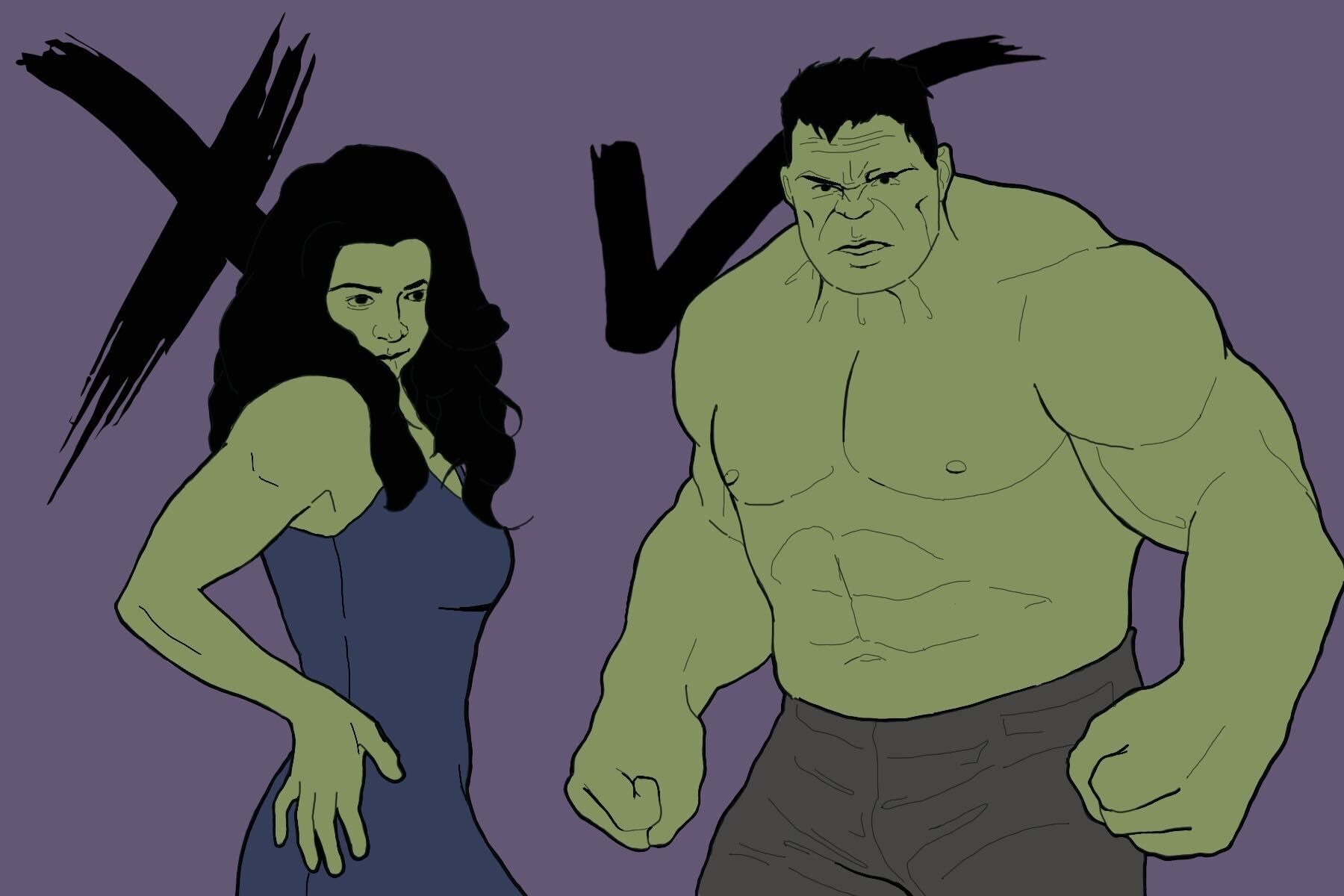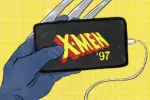Fans of the Marvel Cinematic Universe (MCU) were treated to a first look at She-Hulk, the newest member to join the league of fictional green characters in the MCU, in November 2021. The trailer, a key focus of the Disney+ Day announcements, was especially interesting. While its decision to show the gamma-infused heroine strictly from the neck down may seem clever, it appeared that the full She-Hulk CGI was not ready.
Many fans expressed excitement for a full look, proving that the tease was effective, and audiences were assured by creators that the wait would be worth it. It seems that no fans questioned why the first trailer never included the face of its main character’s superhero persona. While a reveal is always enticing, few people seemed concerned that this was going to be the first of the MCU high-budget streaming shows to center around a fully realistic motion-captured character and that audiences had no clue what she looked like.
Six months after the first look, the official trailer for “She-Hulk: Attorney at Law” finally arrived — and with it, the full debut of the MCU’s first fully CGI motion-captured female character. Audiences were vocal; while some expressed excitement to see Hulk again and the arrival of a long-awaited character, many, upon first viewing, likened She-Hulk’s VFX to a live-action Fiona from “Shrek” and a slew of uncanny valley comparisons.
BRO, WHO DID THIS??? #SheHulk pic.twitter.com/dHxwab4Gbo
— JOLLY J✨ (@DynamoSuperX) May 18, 2022
With a broken heart emoji, one fan proclaimed that Marvel “made their eyes bleed” upon the first reveal of the CGI shots.
https://twitter.com/kevtingz/status/1526684968944017411?ref_src=twsrc%5Etfw%7Ctwcamp%5Etweetembed%7Ctwterm%5E1526684968944017411%7Ctwgr%5E%7Ctwcon%5Es1_&ref_url=https%3A%2F%2Fwww.menshealth.com%2Fentertainment%2Fa40061282%2Fshe-hulk-trailer-cgi-reactions%2F
Other users predicted Marvel would be quick to alter the show following poor fan reception, likening it to the infamous altering of Sonic the Hedgehog in the 2020 live-action movie. Even those in support of the show, especially star Tatiana Maslany, feared that the CGI would overshadow it. Fans particularly marveled at how flat and immovable She-Hulk’s skin was. It played out like an accidental peek behind the curtain, as if audience members were pointing out the crew resetting the stage for the next scene.
Who could question Marvel? Audiences loved Hulk and Thanos — both completely motion-captured CGI human-like characters brought to life to roaring fan reception. Yes, Marvel had mastered male characters with motion capture, all the way down to their intricate and wildly expressive faces. Have you ever counted the number of lines and amount of texture in Thanos’ or Hulk’s face? It’s the defining factor of their faux-realism. It’s what makes them familiar and relatable to audiences despite any purple, green or jarring proportions. The intentional choice to make these computer models imperfect allowed them to exist more comfortably on screen opposite human characters so as to not distract the viewer’s perception.
While most viewers caught the trailer on social media — where it was optimized for smaller screens — those who watched the trailer on Disney+ were met with a She-Hulk of better quality and depth. Her face in particular possessed much more depth with added texture and highlights. While it was an improvement, ultimately it ended up more revealing than affirming. The differences were noticeable, but if she had any more texture than what was seen initially, it was remarkably minimal. It didn’t seem to be a matter of budget as Hulk himself looked no different in these trailers than in his film appearances. It appeared the tremendous difference between the fan reception of She-Hulk and previous motion-captured characters was a matter of gender.
While many said She-Hulk’s face hardly moves at all, in fact, her human persona, Jennifer Walters, exhibits a wide array of movements and expressions. Could the disparity be explained by society’s beauty standards, with She-Hulk always representing the gorgeous model and Jennifer Walters left to be the dull mousey type? Is only Jennifer allowed to be anything but gorgeous? The answer to this could lie in the fact that the animation of She-Hulk’s face is unprecedented territory.
VFX Artist Wren Weichman of Corridor Crew explained that female faces are almost always smooth in the media that audiences are familiar with. In terms of familiarity, not only is She-Hulk a new character, she’s being introduced by way of a male character who audiences have known for over a decade: “[Hulk] doesn’t sit in the uncanny valley for us. One, because he doesn’t look that much like a human. His face is square! He’s just hulked out Chad up in here.” Weichman further commented, “We’re just so used to it at this point that it doesn’t trigger our senses in the same way that She-Hulk is doing.”
Other notable VFX and CGI artists noted that animating female characters in video games, film and television has been a feat many have struggled with. For most of the short time this technology has been around, work has largely focused on male characters — thus most artists are far more experienced in working with male features as opposed to mastering female features.
She-Hulk might not be the first motion-captured female character in recent memory to appear on screen; consider the wasted use of Lupita Nyong’o in the newest “Star Wars” trilogy. Using motion capture, Maz Kanata was far from human and very clearly an alien, but remarkably her face had far more intricate lines and detail. This isn’t to say that lines are the secret to seamlessly integrating any motion-captured humanoid character, but Nyong’o’s character has certainly been the most successful.
It’s interesting how strictly She-Hulk upholds Eurocentric beauty standards as well. It’s been remarked that prior to She-Hulk’s first reveal, Marvel requested that her character model be made smaller. The request sparked protests because such a suggestion would never be made of Thanos or Hulk. It’s noted that throughout She-Hulk’s entire comic run, her size has long been a subject of debate. Her debut in 1980’s “The Savage She-Hulk #1” featured not an overbearing and wildly huge Hulk like Bruce Banner, but a modest and “feminine,” petite-sized Hulk. The mere fact that her name is “She-Hulk” has always implied that she is a modified and distinctively feminine Hulk, and due to overarching Eurocentric beauty standards, her creators have typically insisted on a petite appearance. Later comic book appearances have explored a truly buff and muscular She-Hulk, but the disparity in appearances is jarring and speaks to a larger systemic issue.
There are many Hulks of varying degrees of originality in Marvel comics, but the notion that female Hulks have always been a “Hulk-lite” with a feminine and weaker appearance is unfortunate. Instead of being Hulk’s equivalent, exposed to the same radiation as him, She-Hulk is depicted as an inferior copy. Even when women are raging with gamma radiation, they must still be as small as possible and effectively take up the least amount of space — while still maintaining blown-out emerald hair and refined green makeup.
This is not to say that She-Hulk’s glamour, femininity or size has ever denied her empowering, feminist aspects. She has been a mainstay among female and LGBTQ+ fans largely because of her striking look and powerful messages. The story of a female Hulk who has to balance her professional career as a lawyer with her life as a superhero is a remarkable one. It’s clear the problems with her appearance sprout from systematic perceptions of gender, and it’s a shame that it’s clouded what can be a remarkable story. She-Hulk is only one of the first fully CGI and motion-captured female characters in media today, and while early impressions haven’t been a complete Hulk-smash with audiences, hopefully, she won’t be the last.
“She-Hulk: Attorney at Law” arrives Aug. 17 on Disney+.
















